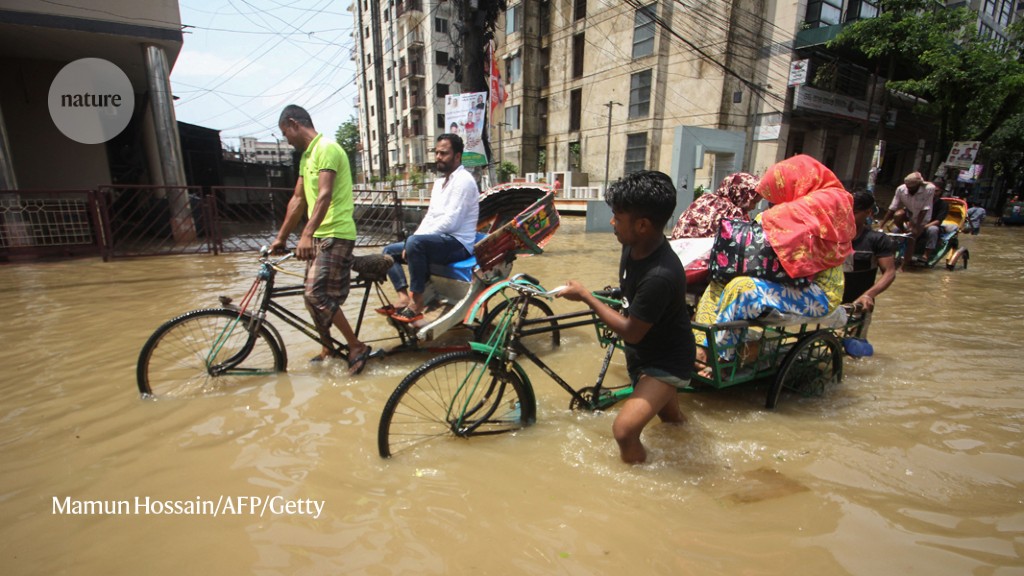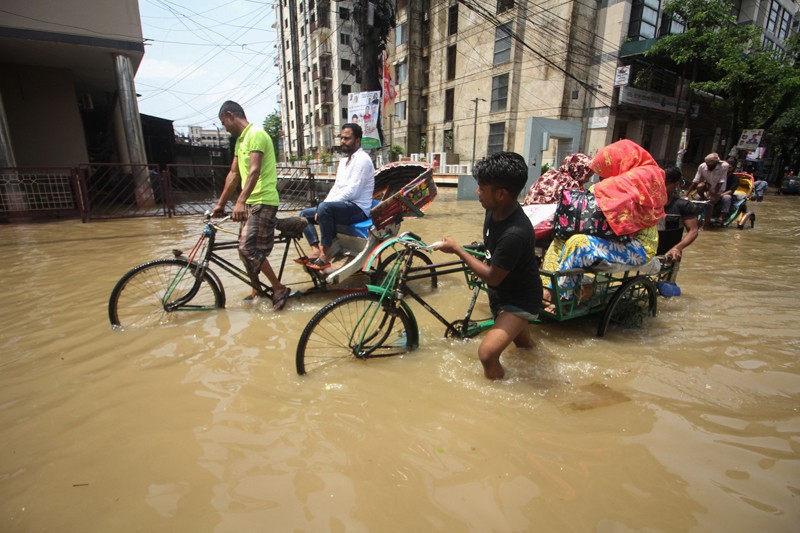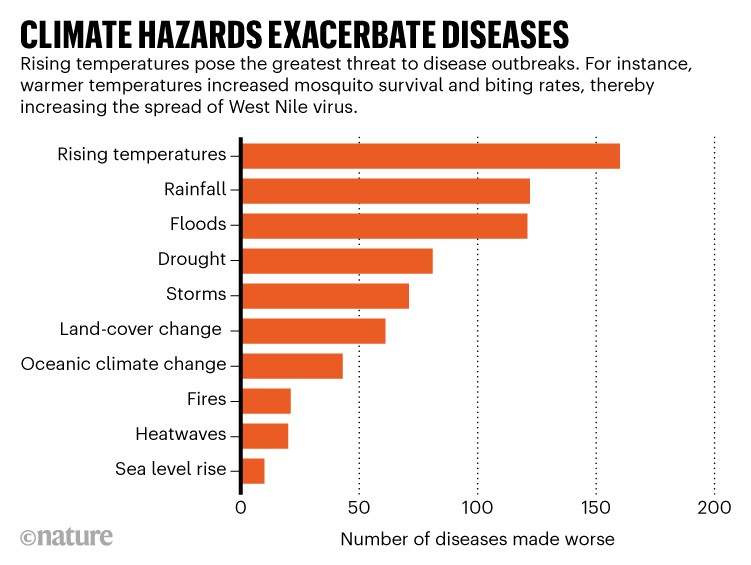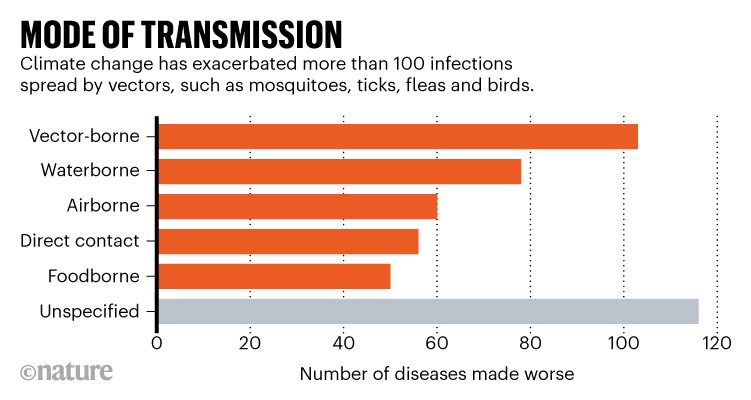Climate change has exacerbated more than 200 infectious diseases and dozens of non-transmissible conditions, such as poisonous-snake bites, according to an analysis1. Climate hazards bring people and disease-causing organisms closer together, leading to a rise in cases. Global warming can also make some conditions more severe and affect how well people fight off infections.
Most studies on the associations between climate change and disease have focused on specific pathogens, transmission methods or the effects of one type of extreme weather. Camilo Mora, a data scientist at the University of Hawaiʻi at Mānoa, and his colleagues scoured the literature for evidence of how ten climate-change-induced hazards — including surging temperatures, sea level rise and droughts — have affected all documented infectious diseases (see ‘Climate hazards exacerbate diseases’). These include infections spread or triggered by bacteria, viruses, animals, fungi and plants (see ‘Mode of transmission’). The study was published in Nature Climate Change on 8 August.
“Looking at basically all the climate effects and all the infectious pathogens in one paper is extremely ambitious,” says Josh Colston, an epidemiologist at the University of Virginia School of Medicine in Charlottesville. “They synthesize a tremendous amount of information very well.”
The study quantifies the many ways in which climate change affects human diseases, says Mora. “We are going to be under the constant umbrella of this serious threat for the rest of our lives,” he adds.
Literature review
Mora and his colleagues examined more than 77,000 research papers, reports and books for records of infectious diseases influenced by climatic hazards that had been made worse by greenhouse-gas emissions. More than 90% of the relevant papers had been published after 2000. Ultimately, the team found 830 publications containing 3,213 case examples.
The researchers discovered that climate change has aggravated 218, or 58%, of the 375 infectious diseases listed in the Global Infectious Diseases and Epidemiology Network (GIDEON), and the US Centers for Disease Control and Prevention’s National Notifiable Diseases Surveillance System. The total rises to 277 when including non-transmissible conditions, such as asthma and poisonous-snake or insect bites. The team also identified nine diseases that are diminished by climate change.
Many studies examine transmissible diseases because the conditions can transfer between people and are, therefore, feared the most, says Mora. But, as he and his colleagues gathered more data, they found reports of worsening non-communicable illnesses, such as asthma outbreaks caused by increased levels of plant and fungal allergens because of global warming. Those allergens are still pathogens — biological agents that cause harm to the human body, says Mora. “But nobody’s paying attention to them.”
The team also identified 1,006 ways in which climatic hazards have led to cases of disease. Many of those involved bringing pathogens and people closer together. Increases in temperature and rainfall, for instance, have expanded the range of mosquitoes and contributed to outbreaks of dengue fever, chikungunya and malaria. At the same time, heatwaves draw more people to water-related activities, leading to a rise in cases of waterborne illnesses, such as gastroenteritis. Storms, sea level rise and floods force people to move and have been implicated in outbreaks of Lassa fever, cholera and typhoid fever.
Climate threats have also made some pathogens more virulent or boosted their transmission. For example, high temperatures increase the survival and biting rates of mosquitoes carrying West Nile virus. Furthermore, these hazards weaken people’s ability to cope with infections through factors such as mental stress, lowered immunity and malnutrition.
“It’s incredible to have this evidence base that they’ve put together,” says Colin Carlson, a global-change biologist at Georgetown University in Washington DC. But, he notes, there are even more diseases known to be influenced by climate change. And the effects of climate change on diseases are even broader than the study reveals. For instance, changing environmental conditions are harming health-care access, food security and other health outcomes, which are beyond the scope of the paper. “There is no part of global health that climate change isn’t reshaping,” he says.










More News
One-dimensional proximity superconductivity in the quantum Hall regime – Nature
Plastic pollution: three numbers that support a crackdown
Probing entanglement in a 2D hard-core Bose–Hubbard lattice – Nature